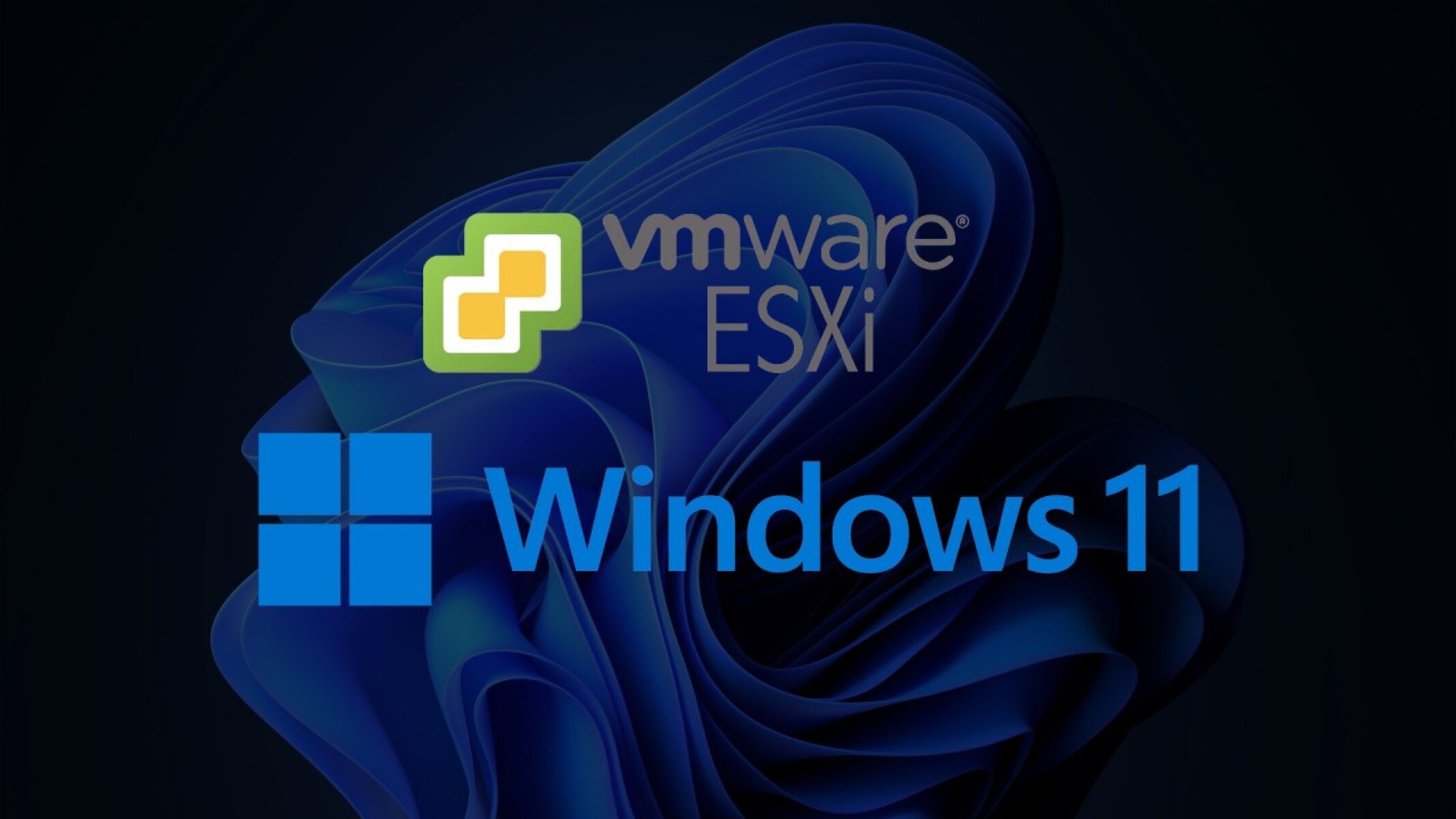Introduction
VMware Workstation is a powerful virtualization tool that allows users to run multiple operating systems on a single computer. It provides an efficient and convenient way to test software, develop applications, and run virtual machines for various purposes. However, one inconvenience that users may encounter is the need to manually start VMware Workstation every time their computer restarts.
In this article, we will explore different methods to automatically boot VMware Workstation after a reboot. By following these methods, you can ensure that your virtual machines start running without any manual intervention, saving you time and effort.
Whether you use VMware Workstation for personal or professional purposes, the ability to automatically start it after a reboot can greatly enhance your workflow. This is particularly beneficial for those who rely heavily on virtual machines and want them to be up and running as soon as their computer restarts.
Throughout this article, we will discuss three different methods to achieve this automation. These methods include using Task Scheduler, creating a shortcut, and modifying the Windows Registry. Each method caters to different user preferences and technical skill levels, allowing for flexibility in implementation.
By following the instructions outlined in this article, you will be able to configure your VMware Workstation to automatically start up after a system reboot, ensuring that your virtual machines are always readily available without requiring manual intervention.
Why Automatically Boot VMware Workstation?
Automatically booting VMware Workstation after a system reboot offers several advantages for individuals and organizations that heavily rely on virtual machines. Let’s delve into some of the key reasons why you would benefit from this automation:
1. Seamless Workflow: By having VMware Workstation start automatically, you can ensure a smooth and uninterrupted workflow. Instead of manually launching the application every time you reboot your computer, you can have your virtual machines up and running immediately, saving valuable time and effort.
2. Continuous Availability: Automatic booting guarantees that your virtual machines are always available, even if your computer restarts unexpectedly. This is particularly crucial for professionals who rely on virtual machines for critical tasks such as software development, testing, or running specific applications.
3. Remote Access: If you need remote access to your virtual machines, automatic booting becomes even more advantageous. By configuring your VMware Workstation to start with the system, you can remotely connect to your virtual machines without having physical access to the host computer.
4. Enhanced Productivity: The time saved from manually launching VMware Workstation and starting all the necessary virtual machines can significantly enhance productivity. You can immediately resume your work without having to spend time on repetitive and mundane tasks.
5. Server Virtualization: Automatic booting is especially useful for server virtualization scenarios. If you are using VMware Workstation to create virtual servers or simulate a network environment, having the application boot automatically after a system reboot ensures that the virtual servers are operational at all times.
By automatically booting VMware Workstation, you streamline your virtualization processes, increase efficiency, and create a more seamless and hassle-free experience. Whether you are an individual user or part of an organization, this automation can significantly improve your workflow and productivity.
Now that you understand the benefits of automatic booting, we will explore various methods to achieve this automation in the following sections.
Prerequisites
Before we dive into the methods of automatically booting VMware Workstation, there are a few prerequisites that you need to fulfill. These prerequisites ensure a smooth implementation and successful automation of the process. Here’s what you need:
1. VMware Workstation Installed: To follow the methods described in this article, you should have VMware Workstation installed on your computer. Whether you are using the latest version or an earlier one, make sure the software is up to date and properly licensed.
2. Administrative Privileges: To configure system-level settings and modify certain files, you need administrative privileges on your computer. Make sure you have administrative access or contact your system administrator to grant you the necessary permissions.
3. Basic Computer Knowledge: While the methods we will discuss are relatively straightforward, it is beneficial to have some basic understanding of your computer’s operating system and system configuration.
4. Task Scheduler Access: To utilize the Task Scheduler method, ensure that you have access to the Windows Task Scheduler. This feature is usually available in all modern Windows operating systems.
5. Familiarity with Windows Registry: If you plan to use the method of modifying the Windows Registry, it is important to have some familiarity with the Windows Registry Editor. Exercise caution while making changes in the registry, as incorrect modifications can cause system instability.
By fulfilling these prerequisites, you will be ready to proceed with the methods outlined in the upcoming sections. It is always a good practice to double-check these prerequisites to ensure a smooth implementation of the automatic booting process.
Now that we have addressed the prerequisites, let’s explore the different methods you can use to automatically boot VMware Workstation.
Method 1: Using Task Scheduler
The Task Scheduler in Windows allows you to schedule tasks to run automatically at specified intervals, including when your computer starts. By leveraging the Task Scheduler, you can configure VMware Workstation to start automatically after a system reboot. Follow these steps to implement this method:
Step 1: Open the Task Scheduler by searching for “Task Scheduler” in the Windows Start menu and clicking on the corresponding result.
Step 2: In the Task Scheduler window, click on “Create Basic Task” on the right-hand side to launch the Create Basic Task Wizard.
Step 3: In the Create Basic Task Wizard, enter a name and description for the task, then click “Next” to continue.
Step 4: Select the trigger for the task. Choose “When the computer starts” to schedule the task to run automatically after a system reboot. Click “Next” to proceed.
Step 5: Select the action for the task. Choose “Start a program” and browse for the executable file of VMware Workstation (usually located in the “Program Files” or “Program Files (x86)” directory). Click “Next” to proceed.
Step 6: Review the summary of the task and click “Finish” to create the task.
Once you have completed these steps, VMware Workstation will be scheduled to start automatically every time your computer reboots. You can verify this by restarting your computer and confirming that VMware Workstation starts without any manual intervention.
This method offers a straightforward and convenient way to automate the booting process of VMware Workstation using the built-in Task Scheduler in Windows. However, if you prefer an alternative approach, the next section will explore another method: creating a shortcut.
Method 2: Creating a Shortcut
Create a shortcut to the VMware Workstation executable and place it in the Windows Startup folder to automatically launch VMware Workstation after a system reboot. Follow these steps to implement this method:
Step 1: Locate the VMware Workstation executable file. By default, it can be found in the “Program Files” or “Program Files (x86)” directory.
Step 2: Right-click on the VMware Workstation executable file and select “Create Shortcut” from the context menu.
Step 3: Once the shortcut is created, press Win + R on your keyboard to open the Run dialog box.
Step 4: Type shell:startup in the Run dialog box and hit Enter.
Step 5: The Windows Startup folder will open. Right-click inside the folder window and select “Paste” to paste the VMware Workstation shortcut into the Startup folder.
Now, VMware Workstation will automatically launch every time your computer starts. You can test this by restarting your computer and verifying that VMware Workstation opens without requiring manual intervention.
This method offers a simple and effective way to automate the booting process of VMware Workstation using a shortcut placed in the Windows Startup folder. However, if you desire a more advanced level of automation and customization, the next section will explore the method of modifying the Windows Registry.
Method 3: Modifying the Registry
Modifying the Windows Registry allows you to configure VMware Workstation to start automatically after a system reboot. This method provides a more advanced level of automation and customization. Follow these steps to implement this method:
Step 1: Press Win + R on your keyboard to open the Run dialog box.
Step 2: Type regedit in the Run dialog box and hit Enter to open the Windows Registry Editor.
Step 3: In the Registry Editor, navigate to the following path:
HKEY_CURRENT_USER\Software\Microsoft\Windows\CurrentVersion\Run
Step 4: Right-click on the right-hand pane and select “New” and then “String Value”.
Step 5: Name the new string value as VMware Workstation (or any preferred name).
Step 6: Double-click on the newly created string value and enter the file path of the VMware Workstation executable in the “Value data” field (e.g., “C:\Program Files\VMware\VMware Workstation\vmware.exe”).
Step 7: Click “OK” to save the changes.
Now, VMware Workstation will be configured to start automatically after a system reboot by modifying the Windows Registry. You can verify this by restarting your computer and checking if VMware Workstation launches without any manual intervention.
Caution should be exercised while modifying the Windows Registry. Any incorrect changes to the registry can cause system instability or other issues. It is always recommended to create a backup of the registry or seek assistance from knowledgeable individuals if needed.
This method offers a more advanced and customizable way to automatically boot VMware Workstation by directly modifying the Windows Registry. By following these steps correctly, you can achieve seamless automation of the booting process.
Now that we have explored all three methods, you can choose the one that best suits your preference and technical expertise.
Conclusion
Automatically booting VMware Workstation after a system reboot can greatly enhance your workflow and productivity. With the methods outlined in this article, you can eliminate the need for manual intervention and ensure that your virtual machines are always up and running without any delays. Whether you choose to use the Task Scheduler, create a shortcut, or modify the Windows Registry, these methods provide flexibility and convenience to suit different user preferences and technical skill levels.
Using the Task Scheduler allows for a straightforward implementation, utilizing the built-in feature in Windows to schedule the automatic launch of VMware Workstation. Creating a shortcut in the Windows Startup folder offers a simple and effective method that ensures VMware Workstation starts every time your computer reboots. For those seeking more advanced customization, modifying the Windows Registry provides the ability to configure VMware Workstation to start automatically by directly editing the necessary registry entries.
Before implementing any of these methods, it is important to ensure you meet the prerequisites, such as having VMware Workstation installed, administrative privileges, and basic computer knowledge. Additionally, exercise caution when making changes to the Windows Registry, as improper modifications can cause system instability.
By automating the booting process of VMware Workstation, you can enjoy a seamless and uninterrupted virtualization experience. Whether you are an individual user relying on virtual machines for personal projects or a professional utilizing virtualization for advanced tasks, these methods will save you time and effort by eliminating the need to manually start VMware Workstation after every reboot.
Choose the method that best suits your needs and follow the steps outlined in this article to automate the booting of VMware Workstation. Enhance your workflow, increase productivity, and enjoy the convenience of having your virtual machines ready to go whenever your computer restarts.

























